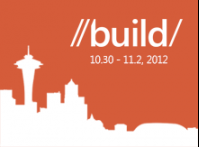Microsoft Design Language: The newest official way to refer to 'Metro'

Microsoft published to the Web the session and speaker list for its Build 2012 developer conference, a day before the show is set to kick off in Redmond.

(Thanks to @lancewmccarthy for the tip.)
The biggest revelation I've seen from the newly published information so far is that Microsoft officials are now using "Microsoft Design Language" as the newest way to refer to the design language and tiled style formerly known as "Metro."
I had a number of my Twitter chums tell me in the past couple of weeks that Microsoft was now using "Microsoft Design Language" as the replacement for Metro, but a Microsoft spokesperson would not confirm, when I asked, that this was the official new lingo. (I believe Brent Schooley was the first to tell me Microsoft Design Language was the final replacement on which the Softies had decided.) I guess Microsoft's use of it on the Build 2012 site is as close as we'll get to an "official" confirmation.
Microsoft Design Language seems to be the way to refer to the look and feel/UX, but it isn't the replacement for what formerly was known as "Metro-Style" -- meaning applications built around the WinRT application programming interface (API). Metro-Style's replacement is "Windows Store," as in "Netflix has built a Windows Store app for Windows 8."
Microsoft officials never did publicly acknowledge the reason that the company decided to drop all references to "Metro" was due to a spat with German conglomerate Metro AG, but that is widely believed to be the reason Microsoft execs are phasing out public use of the term. Microsoft officials have only said that "Metro" was a codename never intended for external/public use. (Yeah, I'm just the messenger. I don't believe that, either.)
Besides the new name for Metro, the Build schedule includes mentions of many sessions focused on building apps for Windows 8. There's a session focused on Casablanca, which is a Microsoft incubation effort to "bring C++ to the cloud." There's another focused on "Project Austin," the C++ team's effort to resurrect Microsoft's "Courier" software. There are a couple of sessions on building line-of-business apps for Windows 8.
There are several sessions where "reading" is the topic. Microsoft officials are on tap to talk up the reading/publishing experiences built for Windows 8 in these talks. Microsoft's Office team is believed to be working on some kind of "active reading" application, possibly in conjunction with Barnes & Noble. It's not clear whether this application will be detailed at Build.
There are also a couple of sessions on "Windows Store device apps," which are defined as apps that allow showcasing of devices. Visual Studio 2012, TypeScript/JavaScript, Windows Azure's infrastructure as a service componenets and the coming "Napa" tools for Office are all on the Build 2012 agenda, as well.